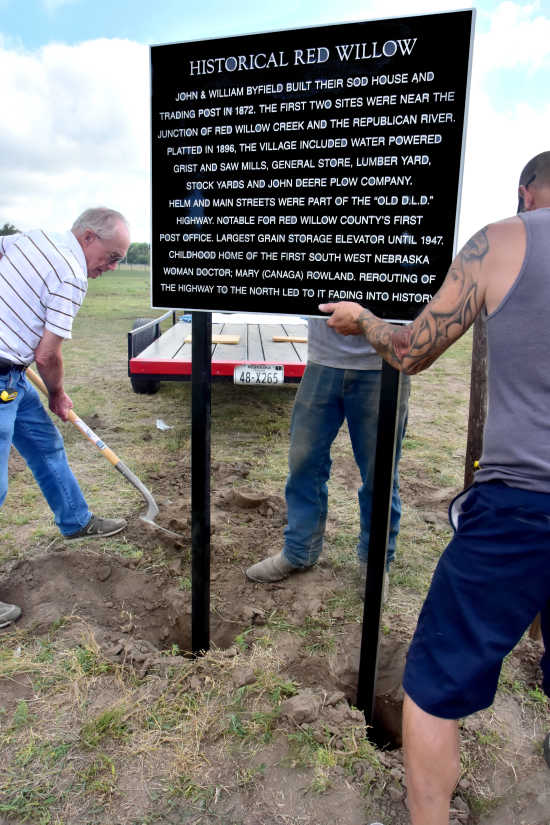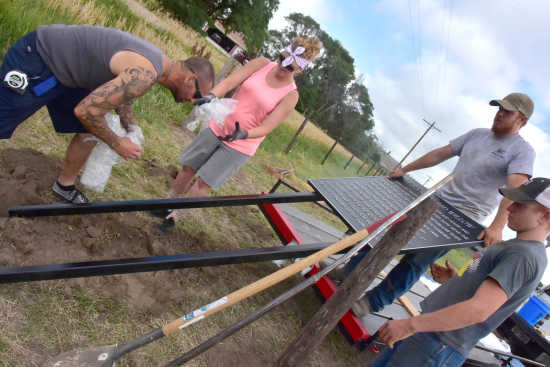Sign honors Red Willow County's first settlement

RED WILLOW, Neb. — A new sign commemorates the settlers, the streets and the story of the three villages of Red Willow, among the first settlements in early Red Willow County.
Densel O’Dea, now of McCook, designed the memorial road sign to share and preserve the history of his hometown. O’Dea says, “In the beginning, there was a soddy … a home, and a trading post.”
Densel was born on the farm of his parents, James and Louise O’Dea, just north of the Red Willow community.

In the muggy fog of Saturday morning, Densel O’Dea; Josh O’Neil and Tiffany Trull of Swanson Signs of McCook; and John O’Dea and his sons, Jake and G, dug post holes in the corner of a pasture on Red Willow Creek, and erected the sign that describes “Historical Red Willow.”
The sign will be illuminated 24 hours a day with solar-powered lights. “It’s positioned so that drivers can see it coming both directions,” Densel says.
———

In the summer of 1872, piano manufacturers John and William Byfield left Nebraska City to build a soddy north of the Republican River, near its confluence with Red Willow Creek. Shortly after their arrival, John built and, until 1876, operated a trading post on the Willow that catered to homesteaders and buffalo hunters.
A third nearby location officially became “Red Willow” when engineers surveyed a town in 1896. John Helm’s log cabin was its first home. Around the cabin grew streets, a stockyard, a lumber yard, a general store, the city hall and more homes.
The DLD Highway (Denver-Lincoln-Detroit) ran through parts of Red Willow’s Helm Street and Main Street.
Red Willow’s school was built up the road to the north. The school buildings still stand, although unused for classrooms, on Highway 6&34. The village’s cemetery is a little further up the same county road.
The DLD changed its route in 1931, bypassing Red Willow for a new route just a bit north, off the river bottom, close by the school building.
The farming community couldn’t withstand aftershocks of the stock market crash of 1929, the loss of the highway in 1931 and the droughts and the Depression of the 1930s, and the lumberyard and general store went bankrupt. The stockyard held on the longest and was finally sold for lumber in the early 1940s.
Of the original structures on the townsite, all that remains today are two homes and a barn.
In 2013, architectural engineer Jeff Tidyman of McCook, president of Engineering International, created a computer-generated storyboard of the Red Willow townsite. Tidyman digitally combined Densel’s memories and memorabilia with maps and images sent by satellites 30 miles above the earth. The storyboard is on display at the Museum of the High Plains at 413 Norris in McCook, which was Red Willow’s closest neighbor.
Densel recognizes donations made to help pay for the sign; John Kugler, McCook National Bank, Griff Malleck, John Deere, Doak Construction, Schmick’s Market, Janssen Motors, Pinnacle Bank, Walmart, the High Plains Historical Society, 1st Central Bank, Sehnert’s Bakery, Dale Dueland, Titan Machinery, Engineering International, Mead Lumber, Dee Scot, Linda Taylor and Helen and Jacob Reiners.
